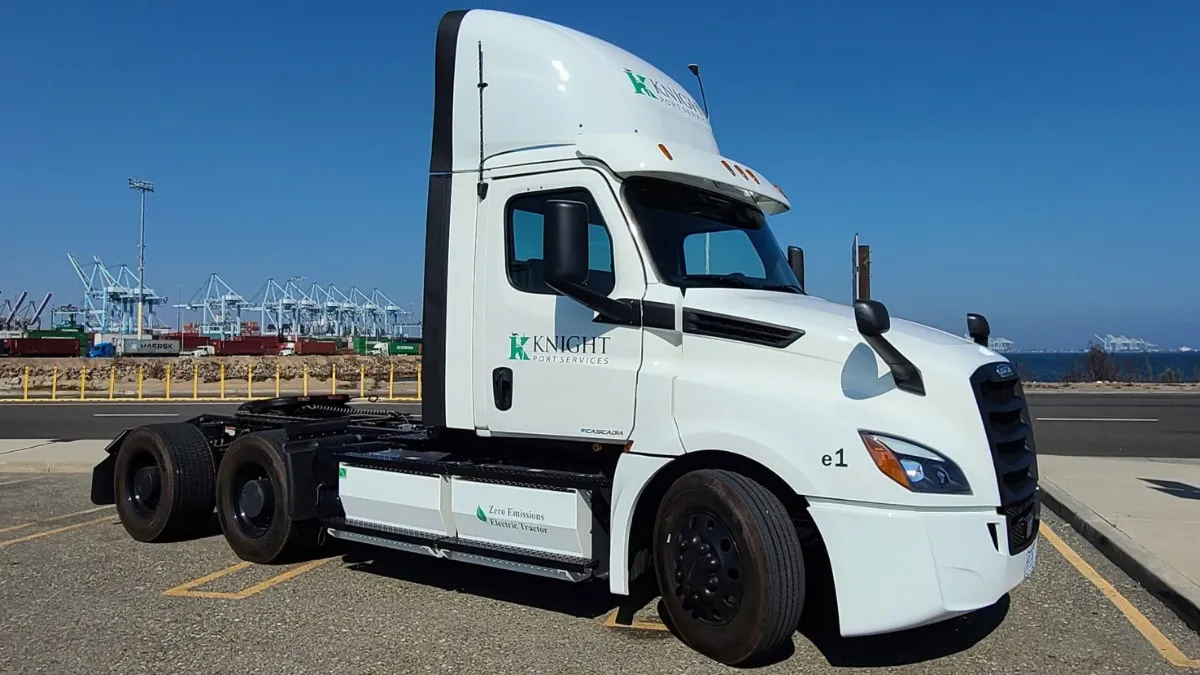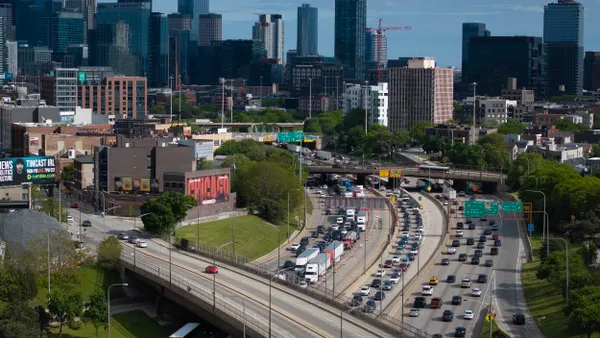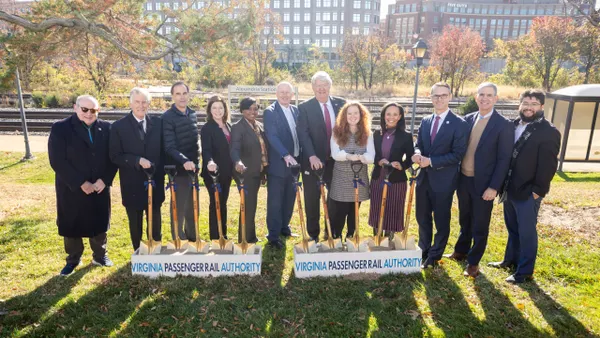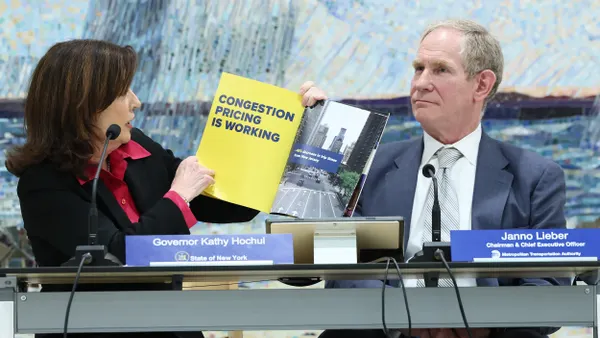Dive Brief:
- Transitioning all of the United States' medium- and heavy-duty trucks to zero-emissions vehicles by 2040 would lead to cumulative pollution-related savings of $485 billion by 2050, according to Jennifer Helfrich, senior manager of state policy at Ceres.
- Reduced emissions from freight and shipping are expected in particular to help address pollution issues in lower-income and environmental justice neighborhoods. "That's a real economic boost and a very real human benefit," Helfrich said Wednesday during the Ceres 2021 virtual conference.
- California is the national leader when it comes to electrifying transportation, though other states are following suit, according to experts. Zero-emissions vehicles are planned to make up 100% of California light-duty sales by 2035, including short-haul and drayage trucks. The state's full transition to ZEV buses and heavy-duty long-haul trucks is expected to be completed by 2045.
Dive Insight:
Transportation is the largest source of greenhouse gas emissions in the United States and in most states has been steadily growing, according to Helfrich. Heavy-duty trucking represents a disproportionate amount of those emissions, she said.
Heavy-duty trucks are 5% of vehicles on the road, Helfrich said, "but they account for more than 25% of overall U.S. transportation emissions." Emissions from the heavy-duty transportation sector also tend to hit low-income and communities of color particularly hard, she said, because of where shipping hubs and ports tend to be located.
"The next big frontier in decarbonization is medium- and heavy-duty vehicles," she said.
Transitioning from a combustion engine to an EV already generates cost savings over the life of a light-duty vehicle, as well as for most medium- and some heavy-duty vehicles, according to Helfrich. And "up front cost-parity is actually just around the corner, something that we would not have said too long ago" for smaller vehicles, she said.
Light-duty vehicles are expected to have upfront cost-parity by 2022 and "investing in electrification is a no-brainer when you pair those cost savings with the significant savings from health and avoided climate risks," Helfrich said.
There are recent data points to illustrate the growth of the ZEV trucking market. On Thursday, Montreal-based ZEV manufacturer Lion Electric announced its largest single order of zero-emission trucks to date, placed by Pride Group Enterprises.
Pride will be "integrating the all-electric trucks into its existing logistics, full maintenance, leasing, rental and equipment retail operations throughout the U.S. and Canada, as well as deploying them with a selection of its fleet management clients," Lion said in a statement.
The majority of the trucks are expected to be delivered to Pride this year, with the remainder arriving in 2022. Lion CEO and founder Marc Bédard, in a statement, called the order "a milestone in the adoption and deployment of heavy-duty electric vehicles — further proof that zero-emission freight is here."
Companies see both profit and sustainability in electrified trucking, but Helfrich said strong policies are needed to coordinate industry stakeholders and "drive market transformation at a pace and scale the private sector cannot achieve on its own." California in particular is "setting the stage," with other states like New Jersey following suit, she said.
The California Air Resources Board (CARB) last year approved an Advanced Clean Trucks regulation that has a manufacturer sales component to it. Reporting requirements for fleets were included in another rulemaking, the head of CARB's transportation and clean technology branch, Tony Brasil, said at Wednesday's Ceres event.
A credit for the sale of heavy-duty ZEVs will launch this year, Brasil said. Fleets will begin reporting data in April 2021.
"We're anticipating there will be about 300,000 zero-emissions medium- and heavy-duty trucks [in California] by the 2035 timeframe," said Brasil.
CARB is also proposing an Advanced Clean Fleets rule to transition to ZEV trucks and buses from 2023 to 2045. Public fleets would be required to purchase 100% ZEV by 2027. This is slated to go to CARB's board for a decision in December, said Brasil.
"There are a number of vehicles already available, and continued improvements expected in technologies," said Brasil, as ZEV suppliers and manufacturers introduce more commercial components for the vehicles.
Other states are looking to California for "inspiration," said Peg Hanna, assistant director overseeing the air monitoring and mobile source programs at the New Jersey Department of Environmental Protection. The state has set a target of reducing emissions economy-wide 80% by 2050, relative to 2006 levels, and has identified transportation as a key area to address.
"We are following CARB's lead and looking to adopt the advanced clean truck rule," Hanna said at the Ceres event. The state is also looking to adopt other low-emissions and fleet modernization rules "to try and get short-term reductions in some of the [environmental justice] areas most impacted by goods movements at our ports."












